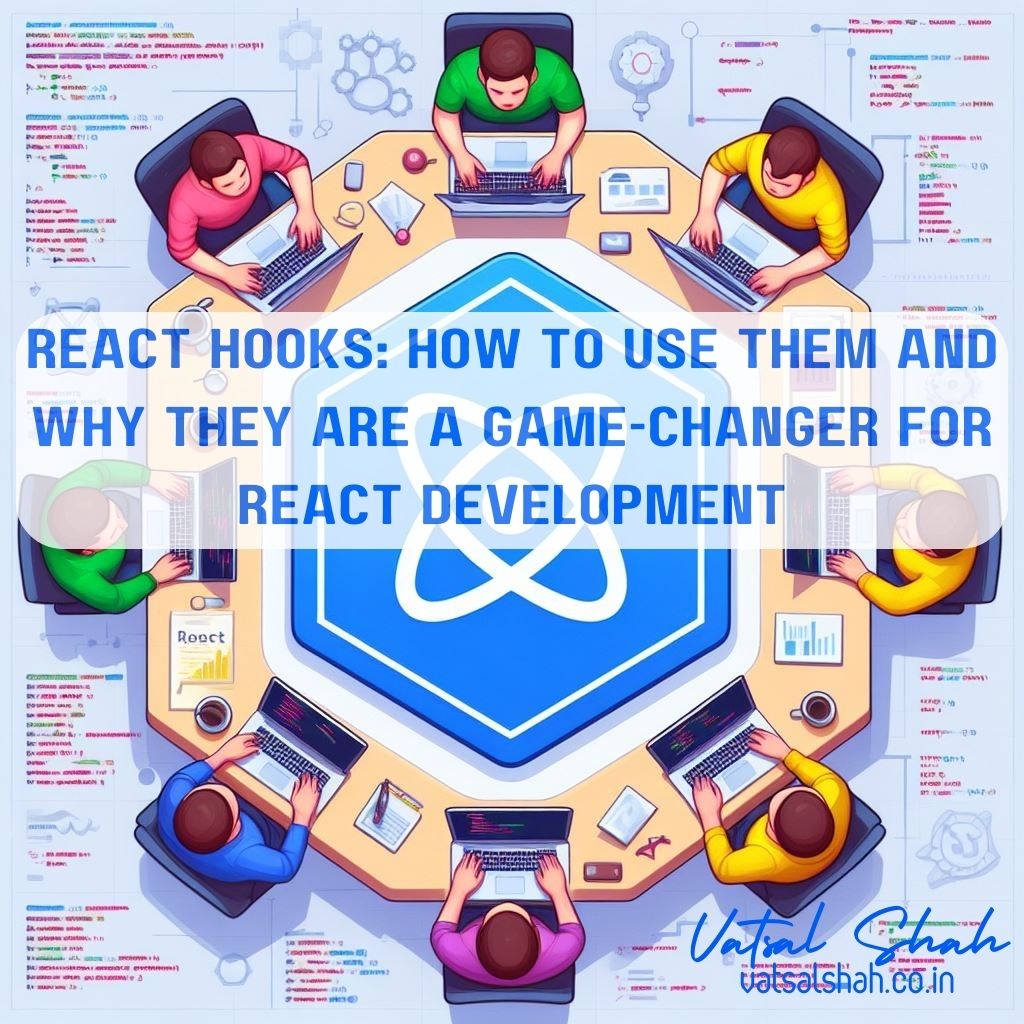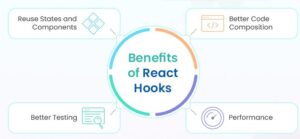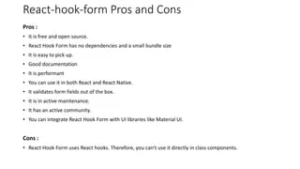Vatsal Shah
Certified ScrumMaster® | Agile Technical Project Manager
React Hooks: How to Use Them and Why They’re a Game-Changer

Introduction
React Hooks are like magical tools that sprinkle simplicity and elegance into your React codebase. Introduced in React 16.8, they allow you to wield state and other React features without the verbosity of class components. Hooks are not just a trend; they’re here to stay, and for good reasons.

Why Hooks Matter
Before Hooks, managing state in React components meant dealing with class-based components. While classes are powerful, they can be intimidating for beginners and lead to complex, tangled code. Hooks come to the rescue by providing a more intuitive way to manage state, accessible to developers of all skill levels.
Here’s why Hooks are essential:
- Simplicity: Hooks simplify your code. No more class boilerplate! You can use state and lifecycle methods directly in functional components.
- Code Reusability: Hooks allow you to reuse stateful logic across components. Say goodbye to higher-order components and render props. With custom hooks, you encapsulate logic and create modular, testable code.
- Composition: Hooks promote composition. You can build complex applications by combining smaller, focused hooks. It’s like assembling Lego blocks to create a masterpiece.

Core React Hooks
1. useState: Managing Component State
The useState Hook lets you declare state variables within functional components. Here’s a simple example:
import React, { useState } from 'react';
function Counter() {
const [count, setCount] = useState(0);
const increment = () => {
setCount(count + 1);
};
return (
<div>
<p>You clicked {count} times</p>
<button onClick={increment}>Click me</button>
</div>
);
}
2. useEffect: Handling Side Effects
The useEffect Hook replaces lifecycle methods like componentDidMount, componentDidUpdate, and componentWillUnmount. It allows you to perform side effects (e.g., data fetching, subscriptions) in functional components:
import React, { useState, useEffect } from 'react';
function UserProfile({ userId }) {
const [user, setUser] = useState(null);
useEffect(() => {
// Fetch user data based on userId
// Update the state with fetched data
// Clean up any subscriptions when component unmounts
}, [userId]);
return (
<div>
{user ? (
<p>Welcome, {user.name}!</p>
) : (
<p>Loading user data...</p>
)}
</div>
);
}
3. Custom Hooks: Your Superpower
Create custom hooks to encapsulate reusable logic. For instance, consider a useLocalStorage hook:
// useLocalStorage.js
import { useState } from 'react';
export function useLocalStorage(key, initialValue) {
const [value, setValue] = useState(() => {
const storedValue = localStorage.getItem(key);
return storedValue !== null ? JSON.parse(storedValue) : initialValue;
});
const updateValue = (newValue) => {
setValue(newValue);
localStorage.setItem(key, JSON.stringify(newValue));
};
return [value, updateValue];
}
Conclusion
React Hooks are a game-changer. They simplify state management, encourage code reuse, and make your components more maintainable. Whether you’re a seasoned React developer or just starting out, embrace Hooks—they’ll level up your React game! 🎉
Remember, the React world is evolving, and Hooks are leading the charge. Happy hooking!
